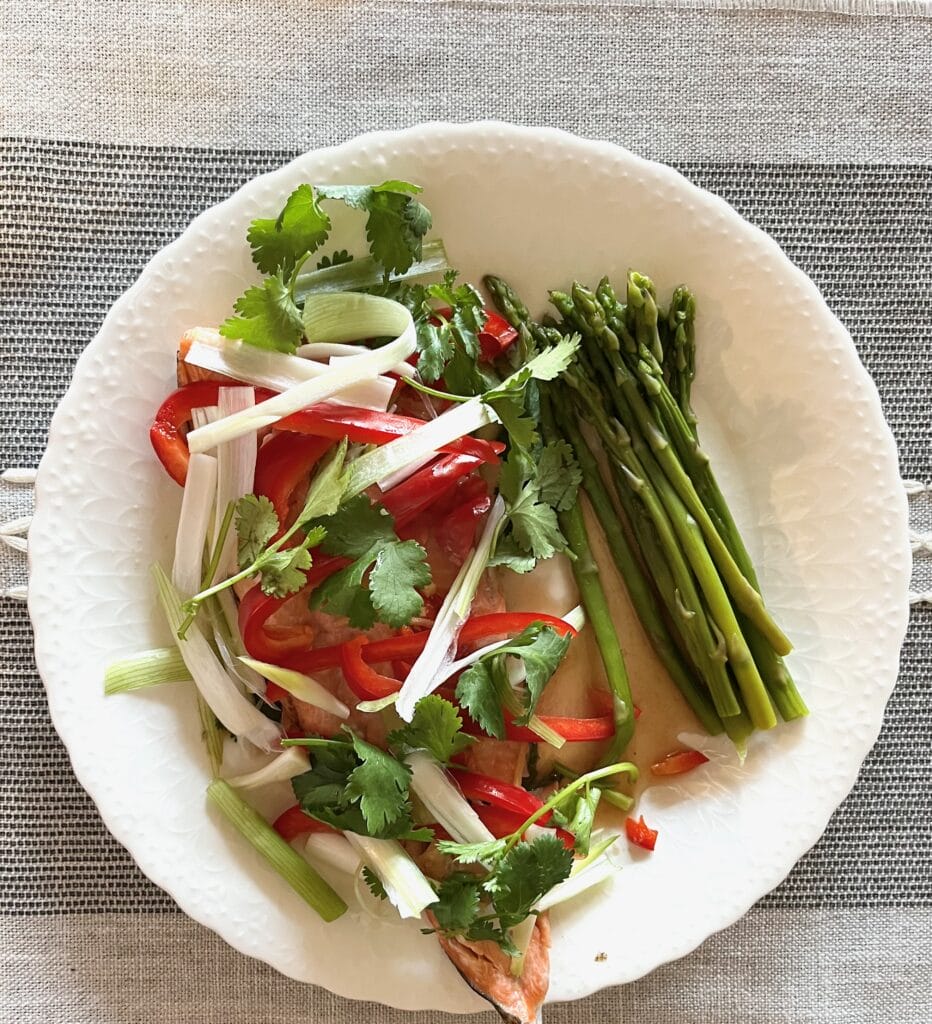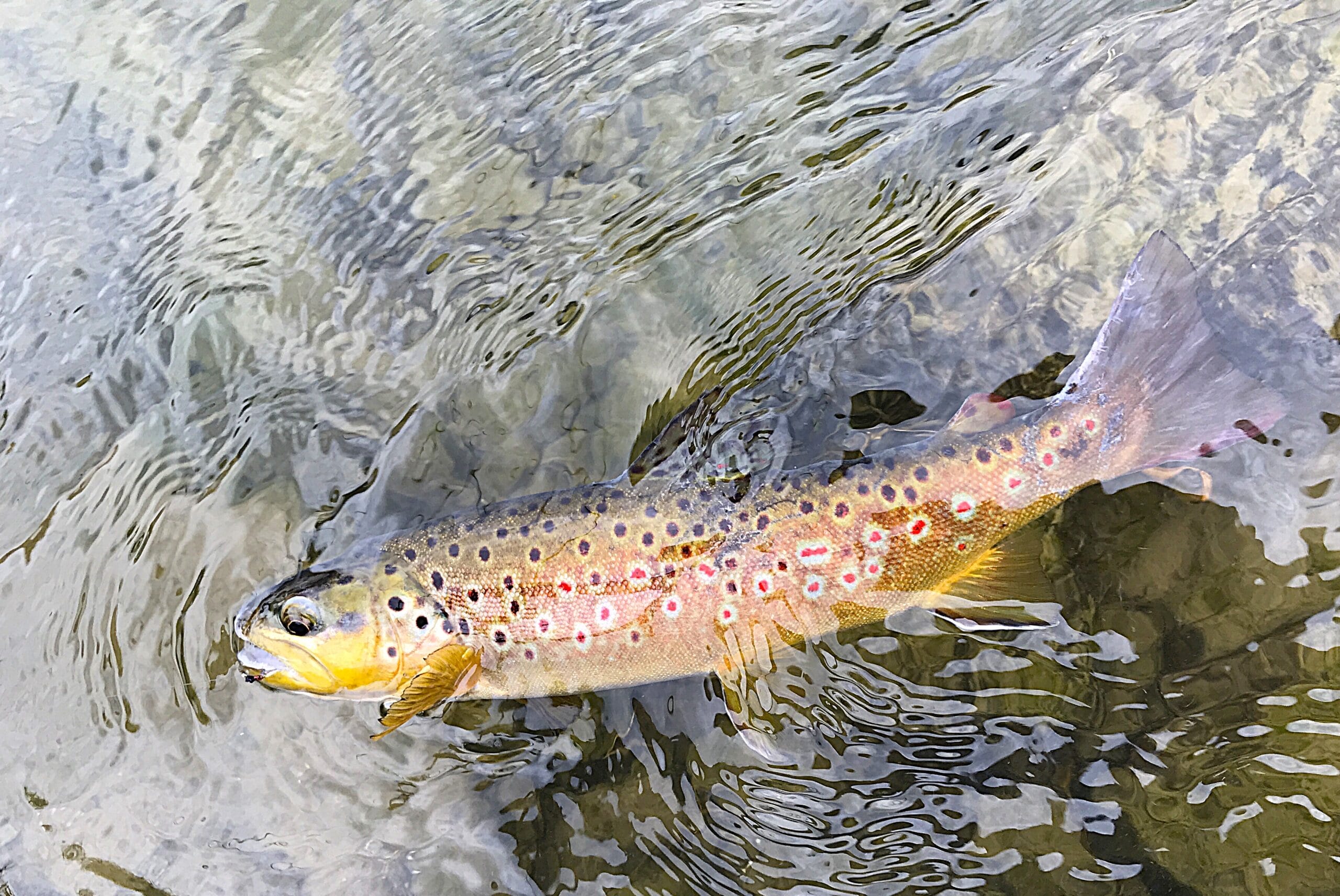When I first joined Trout Unlimited and became engaged in environmentalism in the early 90s, the catch and release ethic was so much a part of our ethos that it took on a moral, almost religious quality. Today, I believe it is still an important management tool and absolutely critical in some situations (obviously where we are attempting to reintroduce or protect threatened populations). But I also believe that catch and release is not the right tool in every situation.
Trout populations have changed dramatically within the last 20-30 years, according to Kasey Yallaly, Wisconsin DNR Senior Fisheries Biologist for St. Croix, Pierce and western Dunn counties in her Driftless Symposium presentation on Brown Trout population trends in the northern Driftless. Yallaly has data to reinforce what experienced anglers have suspected for a long time—habitat and water quality improvements have led to a great abundance of trout, but for a variety of reasons, the trout themselves have become smaller.
Many of our Driftless streams have a trout population density that is so high that it is challenging for these streams to produce trout larger than 14 inches, let alone the holy grail of a 20-inch trout. On the Rush, traditionally considered a “big fish” river, 85% of the fish are 6-12 inches long according to Yallaly’s electrofishing surveys.

Overpopulation can lead to a variety of consequences for undersized trout, including poor physical condition, increased risk of disease and decreased ability to withstand stressors.
The size structure of the trout in a watershed is influenced by many factors. But increasing the opportunities to harvest trout is one way to affect it. The Wisconsin DNR Trout Team has proposed moving the date of the traditional opener to the first Saturday in April to increase harvest opportunity. This proposal was well supported as an advisory question at last year’s spring DNR hearings last year, so it will be an official question at this year’s hearing.
Several Driftless area fish biologists are proposing bag limit changes to encourage anglers to harvest more and smaller trout. For example, in Pierce County the current bag limit is three trout with a minimum size of 12 inches for browns and 8 inches for brook trout. Yalley is proposing this be changed to a bag limit of five trout with a 12-inch maximum size except for one trout that can be over 12 inches.
Heath Benike, Fisheries Area Supervisor for the Wisconsin DNR said, “In the Driftless we are crafting regulations to promote the harvest of what I call “midrange” trout between 9-12 inches. Many streams seem to stockpile trout in this range.”
I want to share my own personal guidelines for keeping fish in the driftless. I am not trying to be prescriptive but am simply offering some ideas to inform your own thinking. You do you (within the confines of fish and game regulations). I also want to add that my thoughts are shaped by living in the Driftless region. I realize those who fish other regions in the Midwest will have different perspectives determined by their local conditions.
For me, being at peace with the decision to kill and keep a trout involves many factors—my own rough estimate of the size structure of trout in the stream I am fishing, my (and my household’s) dietary preferences, and having the time to clean the fish and cook the trout so they don’t end up neglected in the back of my freezer.
Generally, the streams I fish most frequently are class 2 streams that carry a lot of trout, both brook and brown, but not as many trout as you might find in a class 1 stream. When I keep fish, I tend to keep brown trout around 12 inches because it seems like that is the breakpoint where I begin to see fewer trout larger than that. Plus, my dinner plates are 10.25 inches wide. I don’t mind a bit of tail overhang, but I don’t like to see a fish tail flopping onto my table.
What about brook trout? Except for a few that swallowed my fly, I have not kept a brook trout in years. But I am beginning to rethink this. I have experienced enough situations where I have stood in one good hole and caught double-digit brook trout one after another with the king of the hole topping out at 9 inches to make me wonder if some occasional brook trout harvest might not be a bad idea.
It seems a bit counterintuitive to consider killing a brook trout considering everything we know about the impacts of climate change on our native species the exceptional habitat, water quality and water temperature necessary for healthy brook trout populations to thrive. They are our delicate jewels.
But it is also clear that brook trout can easily overpopulate streams with good spawning habitat. Personally, if I were inclined to keep brook trout, I would probably keep fish around 7-8 inches, because that seems to be a kind of breakpoint in the streams I fish. Once again, local and regional conditions should inform one’s choices regarding harvest. I look forward to keeping a few brookies this season.
Cantonese-Style Steamed Fish
Our mothers and fathers instinctually knew what to do with a trout, once it was brought home. But some of us in the TU world may have little experience in cooking stream-dwelling fish. Driftless stream trout can taste a bit strong for some folks, including me. Two seasons ago I found a method for preparing them that I really like.
Ingredients
1small bunch cilantro, leaves and tender stems separated from larger stems
1(1½-inch) knob fresh young ginger (about 1 ounce; see Tip), scrubbed
6 whole scallions, ends trimmed
2 tablespoons Chinese light soy sauce
1 tablespoon Shaoxing wine, dry sherry or anything close
1 tablespoon granulated sugar
About 1½ to 2½ pounds of trout
Salt
1 small hot, fresh red pepper, such as Fresno or Thai bird’s-eye, thinly sliced (optional)
3 tablespoons neutral oil, such as vegetable or canola
Preparation and Cooking
Step 1
Fill a salad spinner with very cold water, and add cilantro leaves and tender stems. Rinse larger cilantro stems and scatter in a plate large enough to fit your fish.
Step 2
Trim the skin and small knobs off the ginger, and scatter trimmings over the plated cilantro stems. Cut the peeled ginger lengthwise into the thinnest planks you can, then cut those planks into slivers — the thinner, the better – and transfer to the salad spinner.
Step 3
Roughly split scallions where the light green parts transition to dark green. Add dark green ends to the plate.
Step 4
Cut scallion whites and light green parts crosswise into rough 2-inch segments, then split each in half lengthwise. Laying each half segment cut side down on the cutting board, slice it lengthwise into the thinnest slivers you can and add to the salad spinner.
Step 5
In a small bowl, stir together the soy sauce, sherry, sugar and 1 tablespoon water until the sugar is mostly dissolved. Set aside.
Step 6
Place a steaming rack or a few clean, empty tuna cans with tops and bottoms removed in a wide, deep, lidded pan or wok, add enough water to reach just below the top of the rack, then bring the water to a boil over high heat.
Step 7
Rinse trout under cold running water and pat dry with paper towels. Lightly salt the fish, stuffing a few aromatics from the plate into the whole fish’s cavity. Place fish on aromatics.
Step 8
Transfer plate to the steamer, cover, and steam until the meat near the thickest part of the trout shows little resistance or flakes when poked. Time will vary from 7-12 minutes based on fish size, so occasionally test.
Step 9
Use two spatulas to carefully transfer fish to a serving platter. Pour the sauce mixture over the hot fish.
Step 10
Drain and spin aromatics in the salad spinner and toss them into a tangled bird’s nest. Spread half of the aromatics over the fish. Sprinkle with chile, if using. Heat the oil in a small skillet until shimmering and just barely starting to smoke. Carefully spoon or pour the hot oil over the aromatics. They should sputter and sizzle significantly. Top with remaining fresh aromatics and serve immediately. Note: Exercise caution if you attempt to be fancy and dramatic by doing this tableside. If you fry your guests and have to take them to the E.R., that’s all they remember. They totally forget how good the fish tasted.
This recipe is adapted from a recipe by Kenji López-Alt in the New York Times Cooking section. I use whatever small cans are in my recycling for a base and occasionally substitute ingredients, omit ingredients or make do with whatever I have in the kitchen. Just cut down on the ingredients if you are preparing trout for one or two people. Bon appétit.



